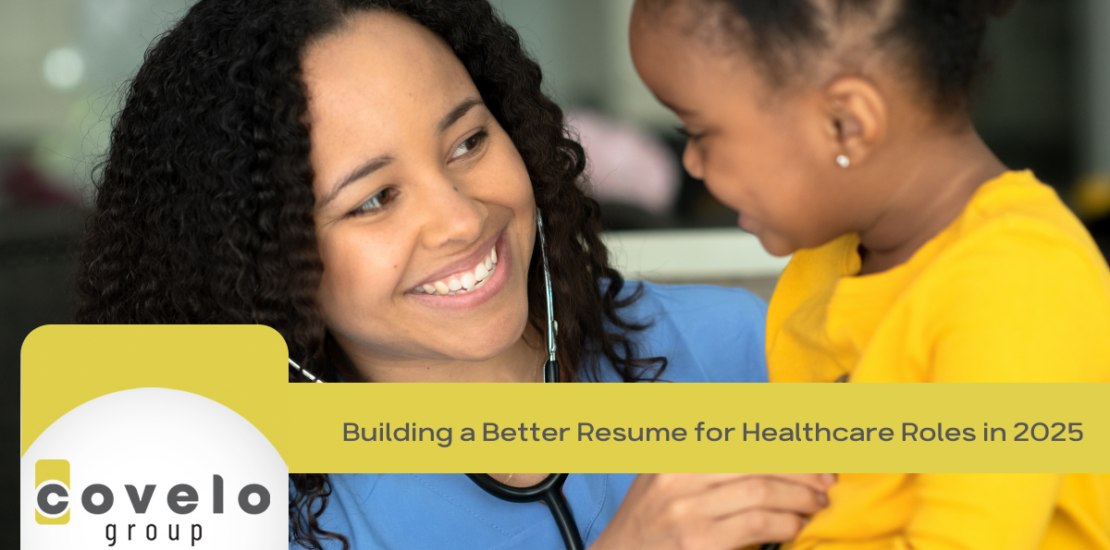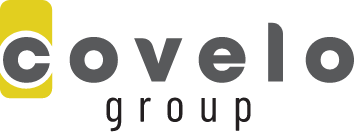- January 24, 2025
- Posted by: Covelo Group
- Category: Clinical Careers

Building a Better Resume for Healthcare Roles in 2025
Maybe it’s your first-ever healthcare job. Or, perhaps you’re a veteran in your field, but now is the time to take things to the next level and find the role you’ve been working towards.
Whatever your personal career goals look like, crafting the strongest possible resume will be the first step in landing the ideal role for you this year. Follow these tips to make your resume the best tool it can be, as you make your goal a reality:
Start with your contact information.
Place your contact information at the top of your resume. This includes your first and last name, phone number, location, and email address. It’s also helpful to provide a link to your profile on LinkedIn and any other professional networking sites.
Next, write your professional summary.
This consists of two to three sentences describing your professional background, advanced and specialty skills, and career goals and achievements. Your summary should offer employers insight into your qualifications as they relate to the specific position for which you are applying.
List your work experience.
Add a work experience section to your resume, listing all relevant jobs. For each position, provide the job title, time frame you held the job, the name of the facility or organization you worked for, and its location. Also include a bulleted list of your job duties.
• If you don’t yet have much professional experience, include any relevant clinical, residency or fellowship programs you have or are currently completing.
List your skills.
Include both hard and soft skills, with emphasis on those most applicable to your field. Equally as important as technical abilities are those skills that illustrate how you work with others and are organized, flexible, and a strong communicator. Depending on the specific role, it may also be beneficial to list skills related to software tools or medical equipment.
Highlight your education and training.
After listing your skills, add an education section to your resume. Include the names of each degree or diploma you earned and the institutions where you studied. If you graduated recently, include your graduation year and, if it was high (a 3.5 or above), your GPA.
Include relevant certifications and licenses.
Depending on your specific field, your resume might include a separate section for certifications and licenses. And even if certification isn’t required for a job, earning this type of credential provides proof of your knowledge, drive, and skillset.
Consider adding additional information.
To further strengthen your resume, add such information as professional memberships, Awards and honors you have received, and volunteer work.
Optimize your resume for applicant tracking systems.
Increase the chances of your resume passing through applicant tracking systems (ATSs) by using keywords from the job description. Strategically match your skills and other qualifications to the job posting.
For additional assistance in building your resume – and to access our direct line to top clinical and non-clinical healthcare jobs across the country – contact Covelo Group today.
